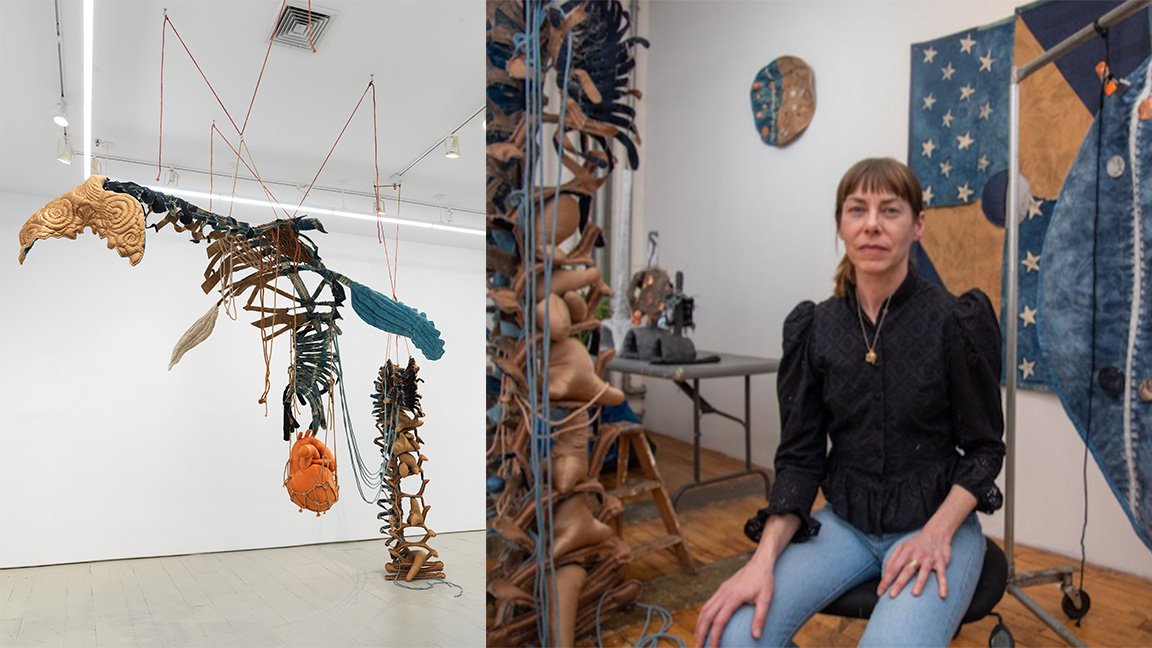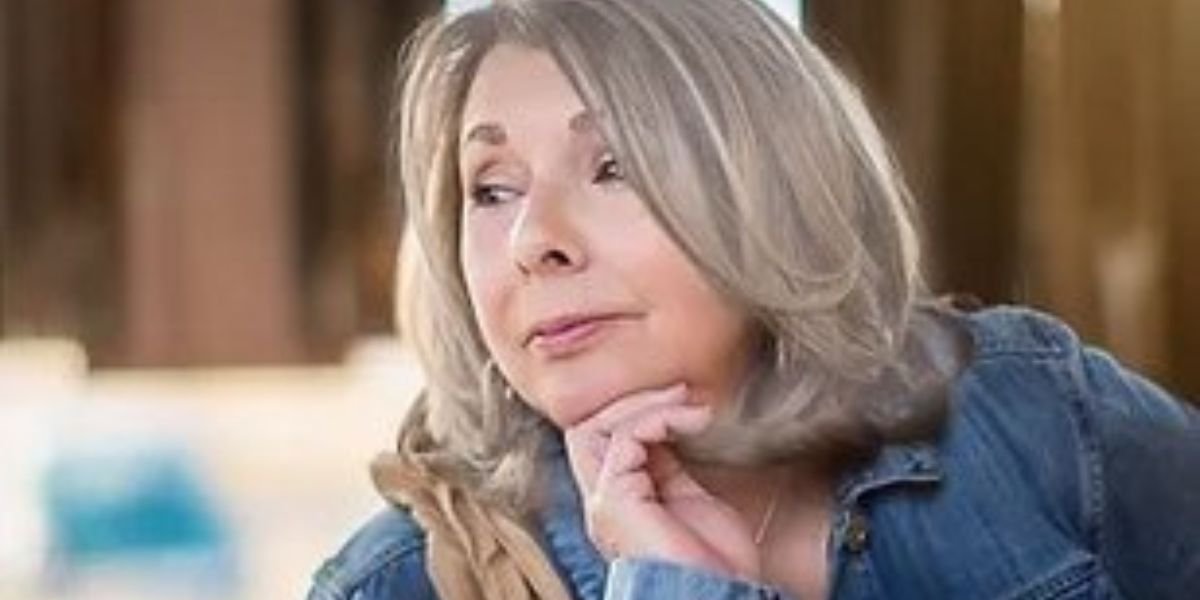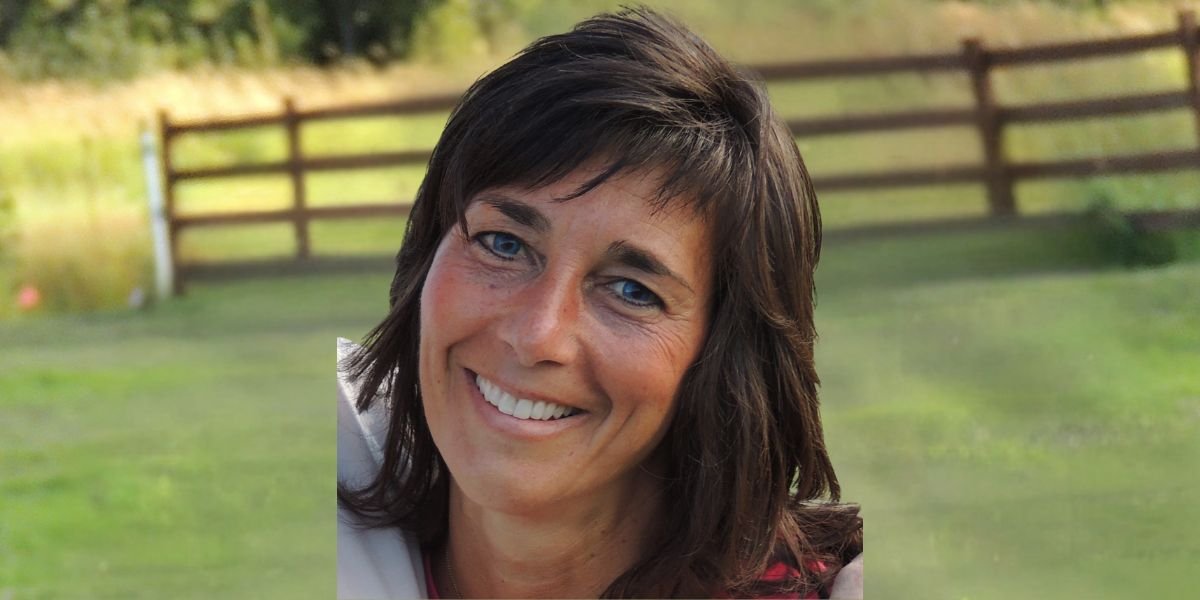Nature Woven in Fabric – Joy Curtis on Symbiosis and Sculpture

Curtis discusses her process, organic materials, and wearable art that merge human and natural worlds
Joy Curtis shares insights into her nature-inspired sculptures, discussing her use of natural dyes, the concept of symbiosis, and wearable artworks that foster interaction and blur human-environment boundaries.
Joy Curtis stands as a compelling voice in contemporary sculpture, capturing the delicate interplay between natural forms and their abstracted, imagined counterparts. Known for her use of natural pigments and her meticulous layering of plant, mineral, and insect-based dyes, Curtis creates works that evoke landscapes and ecosystems through the textures and hues embedded within her materials. Her sculptures do not simply mimic the flora and fauna they reference; instead, they engage in a conceptual symbiosis with these organic elements, inviting viewers to ponder the intricacies of ecological coexistence. Her works, praised in the New Yorker and Hyperallergic, transform materials like fabric and iron into immersive expressions of her encounters with the natural world, merging lived experience with abstract forms in ways that intrigue and inspire.
In this exclusive interview with Mosaic Digest, Curtis opens up about the philosophy guiding her recent exhibitions and her creative processes. Reflecting on works like Night Hike and Ocean Grandma, she delves into the interconnectedness of living organisms, the transformative power of natural dyes, and her unique use of wearable sculptures. Curtis’s insights illuminate not only her profound respect for nature but also her playful challenge to conventional categories of form and species, inviting us into an exploration where art and ecology harmoniously converge.
Joy Curtis masterfully captures nature’s essence, blending organic materials and sculptural form to create compelling reflections on interconnectivity and transformation.
How do you describe the relationship between your sculptures and the natural environments they reference, such as the night forests of Madagascar or the depths of the ocean?
My sculptures are a study and analysis of the natural environments they reference. I have a strong interest in form and try to understand the formal logic of a plant or animal structure. I am not trying to recreate the living creature but to create a cartoon, or an abbreviated version of what I see. For example, I walked amongst, looked at, photographed, and then studied the structure of screw pines and walking trees in Madagascar and tried to imagine through dyeing, cutting, and constructing fabric how a screw pine’s leaves unfurled during growth or how a walking tree might move towards sunlight under a forest canopy. On another level, I am honouring the tree and my experience of it by trying to create an alternate (conceptual) version that I can place within my own urban environment.
Can you explain your process of using natural pigments for dyeing your fabrics? How does this choice impact the meaning of your work?
The plant, mineral, and insect-based dyes do not look the same as synthetic dyes. Originally, synthetic dyes were coal-derived. Coal is the concentrated murk of ancient life, so I am not interested in drawing a clear line regarding what is natural and what is not. I enjoy working with plant and mineral dyes more. I am also able to make slight colour adjustments to these dyes as I work using modifiers.
I have a history of working with plants and botanicals in another field and developed a love for them. Indigo was the first plant dye I used. I was trying to create a batik with an obvious greyscale, and indigo was the best way to achieve this as the dyer can build up the pigment in layers without melting the wax.
The dye colours are transportive for me. When I look at the colour of the cloth, I feel I am looking at the natural world. It is similar to using paint pigments, which are mostly minerals, but applied in an immersive way and penetrating the whole cloth. I think about plant, animal, and mineral dye materials as another layer of material meaning: the fabric is impregnated with iron, so it is a metal sculpture. There is a representation of a plant, and then there is actual plant matter embedded in the fabric as well.
In your sculptures, you blend recognizable forms from both flora and fauna. What inspired you to explore these shared morphologies, and what do you hope to convey through this exploration?
When you exist in an environment, you will shape and be shaped by dirt, imminent threats, cultural consensus, survival instincts such as camouflage, and mood. This goes for all living things, including the dirt. We are all shaped by the environment and possibly shape-shifting. My work is a challenge to our wholeness. I am more interested in permeability and ambiguity than in clear categorical constructs. In my body are billions of other organisms and probably a lot of negative space if we zoom in. We can cross and blend categories through play and by creating hypothetical environments (sculptures) as kinesthetic and social thought experiments.
The concept of symbiosis is significant in your work. How do you see your sculptures fostering a dialogue about the interconnectedness of living organisms?
I am interested in the physical connections between living things and one way to talk about this is through Night Hike 1 (Epiphytes), the title of one of the works in my exhibition, Night Hike and Ocean Grandma. An epiphyte is an organism that grows on another without having a parasitic relationship. Epiphytes use the phorophyte (the base organism) as an armature, but they also add things to their environment.
Symbiosis is important to think about because it is realistic; it is a natural system within our reality that we can model other things after. When the tree begins to die, the woodpecker shows up to eat the grubs, and the mushrooms come in to slowly level it, and the whole process continues.
How do you envision the viewer’s interaction with your wearable sculptures, and what experience do you hope to create for those who engage with them?
During Night Hike and Ocean Grandma, I invited several artists to engage with the 5 wearable sculptures. I left it very open ended, and it became a social experiment. My interpretation of the various interactions that took place included: folk horror, victorian-like promenading, shamanic ritual, kundalini chanting and meditation, modern dance, and post-riot girl raging. My intention was to offer the performers a vehicle for transforming into an archaic or future-human realm without dictating what that should look like. Exhibiting artwork is about bringing people together into dialogue, and I wanted to provide another way of doing that through wearable sculptures.
Photo by Kay Hickman












